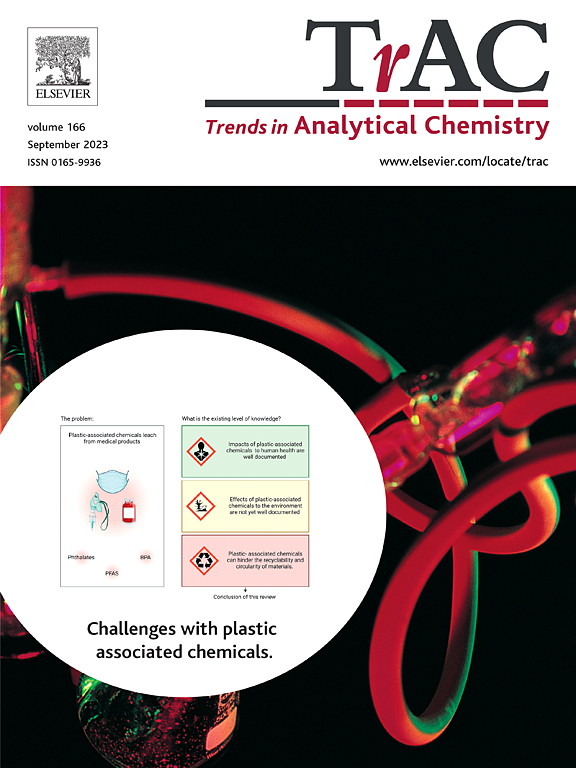Wearable MOF biosensors: A new frontier in real-time health monitoring
IF 11.8
1区 化学
Q1 CHEMISTRY, ANALYTICAL
引用次数: 0
Abstract
The development of wearable biosensors has revolutionized real-time health monitoring, enabling continuous and personalized insights into physiological states. Metal-organic frameworks (MOFs), with their unique properties including high surface area, tunability, and molecular selectivity, have emerged as promising materials for enhancing the sensitivity and specificity of wearable biosensors. This review explores recent advances in MOF-based wearable biosensors, highlighting their role in detecting key biomarkers for a range of health applications. This review discusses how MOFs improve analyte binding, signal transduction, and stability in physiological conditions, as well as the integration of these sensors with artificial intelligence (AI) and machine learning (ML) algorithms to enhance data processing and predictive analysis. Despite challenges such as ensuring biocompatibility, long-term stability, and scalability, wearable MOF biosensors represent a new frontier in personalized healthcare. Their potential to monitor multiple biomarkers simultaneously and provide continuous, accurate health assessments paves the way for future innovations in telemedicine and remote patient monitoring, ultimately contributing to improved healthcare outcomes and proactive disease management.
求助全文
约1分钟内获得全文
求助全文
来源期刊

Trends in Analytical Chemistry
化学-分析化学
CiteScore
20.00
自引率
4.60%
发文量
257
审稿时长
3.4 months
期刊介绍:
TrAC publishes succinct and critical overviews of recent advancements in analytical chemistry, designed to assist analytical chemists and other users of analytical techniques. These reviews offer excellent, up-to-date, and timely coverage of various topics within analytical chemistry. Encompassing areas such as analytical instrumentation, biomedical analysis, biomolecular analysis, biosensors, chemical analysis, chemometrics, clinical chemistry, drug discovery, environmental analysis and monitoring, food analysis, forensic science, laboratory automation, materials science, metabolomics, pesticide-residue analysis, pharmaceutical analysis, proteomics, surface science, and water analysis and monitoring, these critical reviews provide comprehensive insights for practitioners in the field.
 求助内容:
求助内容: 应助结果提醒方式:
应助结果提醒方式:


